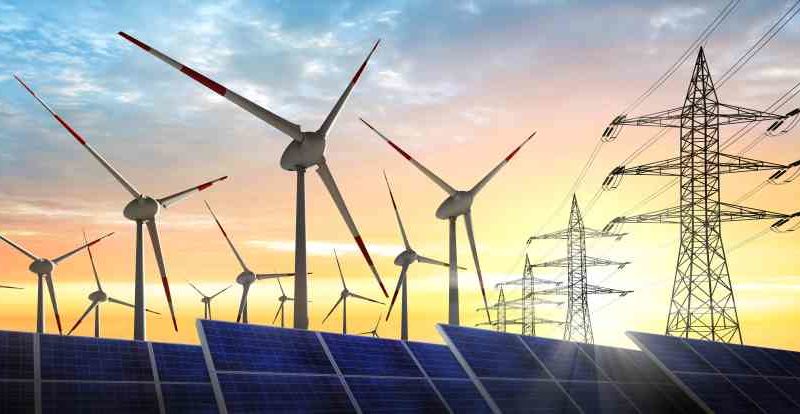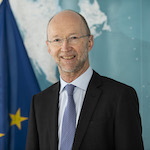
REPowerEU Plan: How to decrease Europe’s energy dependency
The Russian invasion of Ukraine has adversely affected so many different aspects of our lives in recent months – and requires a range of policy responses from the EU. Nowhere is this more marked than in the energy sector.
In recent years, as the EU has reduced its use of coal for generating energy and seen domestic gas production decrease significantly, we have conversely witnessed an increase in our dependence on imports to fuel our energy sector. Mainly fossil fuels. And much of it has come from Russia. In 2021, the EU imported more than 40% of its total gas consumption, 27% of oil imports and 46% of coal imports from Russia.
The energy mix is of course a choice left to Member States – and national politicians will argue that this dependence on Russia was always going to be temporary in the context of the longer-term transition towards cleaner energy. In hindsight, even before we take into account the Kremlin’s military ambitions, this was a dangerous level of dependence on one single – and unreliable – supplier.
In response to Russia’s war of aggression, the Commission has put together a plan called REPowerEU. The original blueprint was outlined in March, and this was followed in May by a substantial package of proposals.
And within our energy department, DG ENER, the Commission has established a special task force charged with helping wean the EU off Russian imports. Indeed, President von der Leyen has made clear that we will get substantially out of Russian gas this year and altogether by 2027.
So I welcome this opportunity to outline [to the European Files] what we are doing to achieve this overarching ambition.
The first point is that REPowerEU amplifies the European Green Deal – the Commission’s top priority. In 2021 the Commission tabled proposals aimed at reducing our greenhouse gas emissions by 55% by 2030 –the “Fit for 55” package, including reducing our gas consumption by 30% by 2030.
Clearly we now need to go further.
The first element of our approach comes via energy efficiency. Let’s not forget that energy efficiency and energy savings are the quickest and cheapest solution to increase our energy security and address high energy bills. The cheapest form of energy is the one that we don’t consume! So in concrete terms, we propose to increase the binding 2030 energy efficiency target in the Energy Efficiency Directive from 9% (proposed last year) to 13% relative to projected consumption at the end of the decade. We also published a Communication on saving energy.
The second element is to deploy renewables more quickly – in all their variety. We can use renewables to generate electricity, but also to accelerate renewable hydrogen as a viable alternative to gas. We have proposed to our Member States to amend the Renewable Energy Directive to increase to 45% our target for renewables in our energy mix by 2030, instead of 40% as proposed last year (already an increase on the existing target for 2030 which is just 32%).
This is not empty target setting. To back this up, the Commission has presented sectoral strategies to boost solar energy deployment, accelerate the production of green hydrogen and double the production of biomethane by 2030. A Commission Recommendation to tackle the slow and complex permitting for major renewable projects will also address one of the major bottlenecks that investors face.
All this to underline that there is no backing off the Green Deal – indeed we want to accelerate the green transition. That said, the combination of more energy efficiency and increased renewable energy output will take some time to be rolled-out to the extent that we can replace fossil fuels imports altogether. We are fully aware of the potential implications for energy security in the short term.
And this brings me to the third pillar of REPOWER EU – diversifying our sources of supply.
The EU has made considerable progress over the past decade, investing in infrastructure to ensure all Member States have more than a single source of supply. Today, thanks to these efforts, all regions have access to LNG or other alternatives. Through this EU-funded investment in Projects of Common Interest (PCIs), we have the flexibility to source gas supplies from elsewhere, notably LNG.
We have therefore been working with international partners in recent months to diversify supplies . Just last month, the Commission signed a memorandum of understanding with Israel and Egypt to supply LNG. In March, President Biden pledged to President von der Leyen that the US would supply an additional 15 bcm this year, rising alongside with other international partners to 50 bcm by2030. We will do more to step up coordinated action which has the potential to grow further the current record levels of LNG imports, and help us to fill our storage facilities. I must also underline that this agreement with the US also refers to future cooperation on clean energy, i.e. it does not lose track of our long-term ambition by locking us into a permanent commitment on LNG.
Now, together with Member States, the Commission has established an EU Energy Platform to coordinate this effort. It aims to pool EU gas demand (and looks ahead to the hydrogen era), optimize the use of infrastructure and support international outreach as necessary first steps towards buying gas on a more coordinated basis across Europe.
In parallel, the Commission is working closely with Member States to reinforce our preparedness for possible major supply disruption. With an unreliable Russia increasingly weaponising its energy exports where possible, we are encouraging Member States to conclude bilateral agreements in the spirit of European solidarity.
And the EU is preparing carefully for the coming winter. We must be ready, and we will be ready for whatever challenges are thrown our way in the coming months.
Finally, I must just recall that none of this will be free of charge. We estimate that additional investment worth roughly 210 billion EURO will be needed between now and 2027 to phase out all fossil fuel imports from Russia. But this should be seen relative to the approximate 100 billion EURO or so that we pay Russia every year for fossil fuels.
Most of this will come from private funds, but there will be substantial amounts necessary from public funding in order to facilitate and leverage this investment. In this sense, the EU is making significant funding available. The Recovery and Resilience Facility (RRF), set up to support our post-pandemic economic recovery, will be at the heart of implementing the REPowerEU Plan, providing additional EU funding. In this context, we have asked Member States to add a REPowerEU chapter to their Recovery and Resilience Plans to channel investments to REPowerEU priorities and make the necessary reforms. Member States can use the remaining RRF loans (currently 225 billion EURO) and new RRF grants funded by the auctioning of Emission Trading System allowances, currently held in the Market Stability Reserve, worth 20 billion EURO.
But this is not all. We are providing additional flexibility for national government to rechannel EU cohesion and agricultural funds, and the newly established innovation fund (derived from ETS revenue) will also be available. Investment for infrastructure is also available through the Connecting Europe Facility.
All in all, we face a challenging period ahead – made considerably worse by an unpredictable and unreliable regime in Moscow. From our side, it is clear that we are stronger and more efficient by working closely together – also of course with Ukraine and Moldova, and our partners in the Western Balkans. We are determined to achieve not only much greater energy autonomy, but also to deliver on the Green Deal and accelerate the clean energy transition. These efforts are two sides of the same coin.
____________________________________________
Related links
· REPowerEU: affordable, secure and sustainable energy for Europe (May 18 webpage)
· Joint European action for more affordable, secure energy (March 8 outline)




